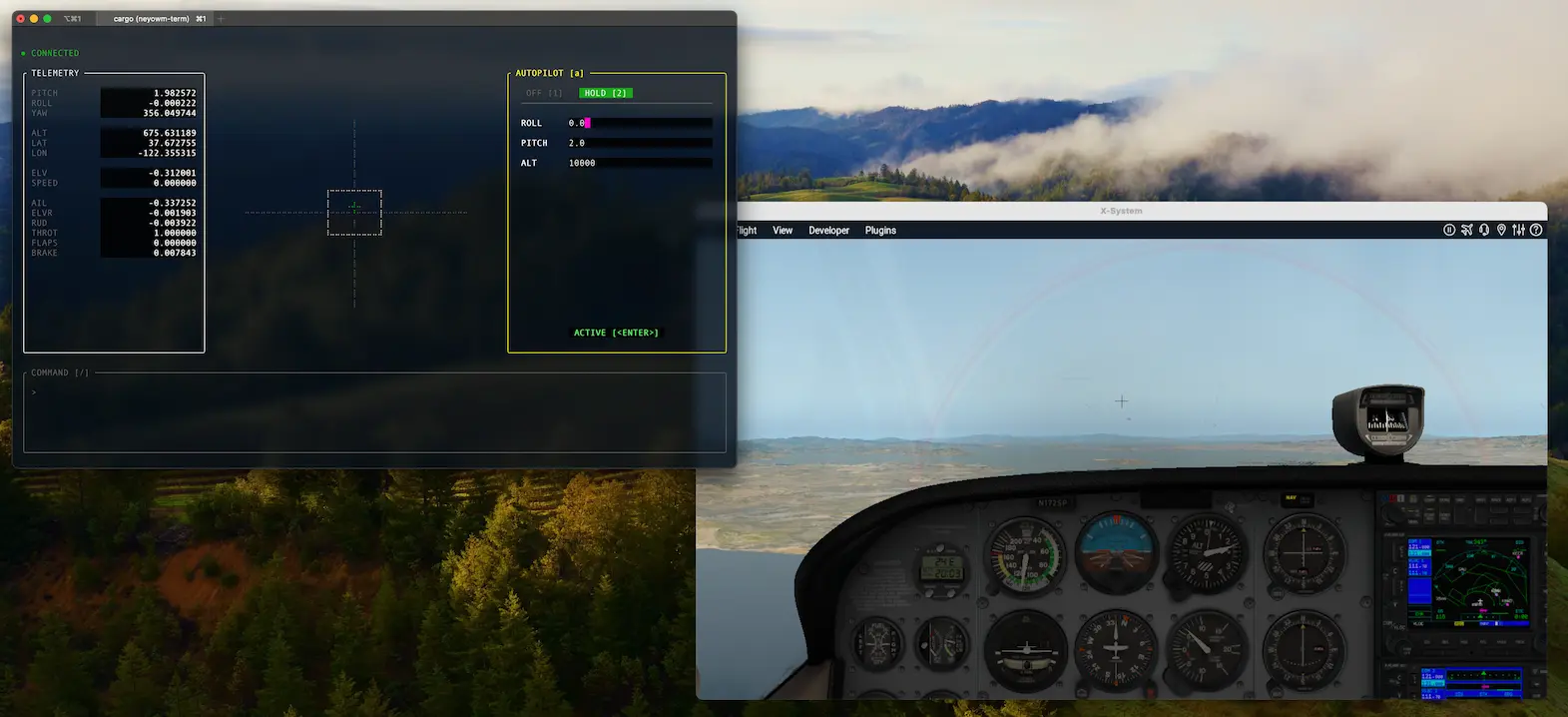
Somehow I learned that NASA maintains an X-Plane plugin called XPlaneConnect that exposes an XPC interface for X-Plane 11 over UDP. Wait… does that mean I can write my own autopilot? Yes, yes it does.
I built a small Rust library to wrap the C API of the plugin, hacked together an in-process pub-sub architecture for the autopilot subsystem, and slapped a simple terminal UI on top of it.
The autopilot is a simple PID controller that can be used to control the aircraft’s heading, altitude, and speed. It currently only supports single-engine aircraft, and is only able to maintain a constant altitude and heading. But hey, it won’t crash the plane (usually)!
What I found most interesting about this project were the PID controllers. I’ve never really crossed paths with these before, despite being faced with problems in the past that could have been solved with them (especially in game development). These nifty little controllers are just a bit math that attempts to minimize the error between a desired value and the current value over time. For example, if you want to maintain an air speed of 200 knots, and have access to a speedometer and throttle, you can use a PID controller to adjust the throttle to converge on and maintain that speed.
Specifically, the PID controller uses three terms:
By tuning the coefficients of these three terms, you can adjust how aggressively the controller responds to changes in the error. Tuned correctly, the controller will quickly converge to the desired value without oscillating or overshooting. Tuned poorly, the controller will oscillate or overshoot the target, or even diverge completely. It can be tricky to get the tuning right, but there are some techniques to help with this.
Now that I know these PID hammers exist, I’m seeing a lot of PID-shaped nails everywhere…